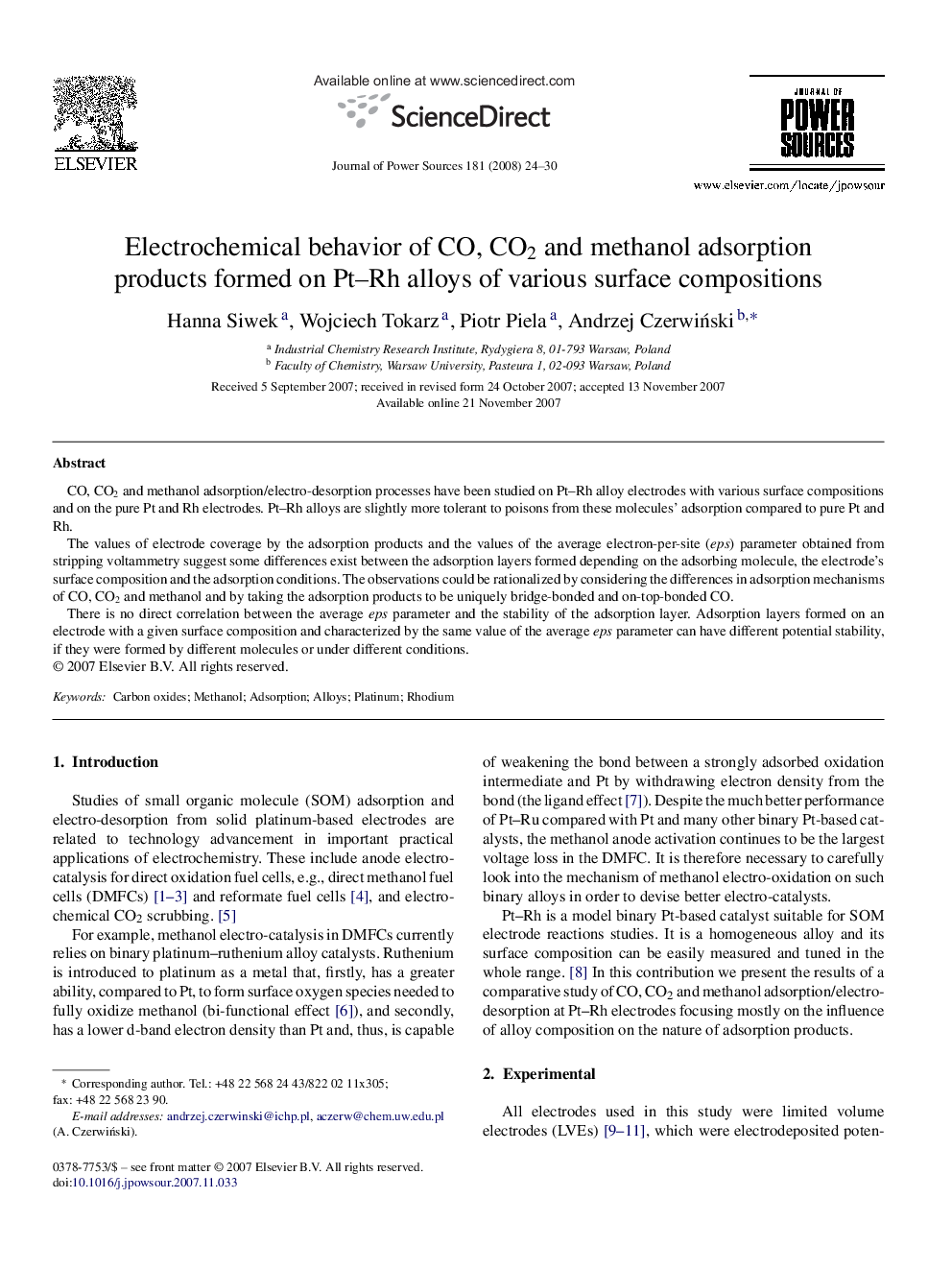| Article ID | Journal | Published Year | Pages | File Type |
|---|---|---|---|---|
| 1285475 | Journal of Power Sources | 2008 | 7 Pages |
CO, CO2 and methanol adsorption/electro-desorption processes have been studied on Pt–Rh alloy electrodes with various surface compositions and on the pure Pt and Rh electrodes. Pt–Rh alloys are slightly more tolerant to poisons from these molecules’ adsorption compared to pure Pt and Rh.The values of electrode coverage by the adsorption products and the values of the average electron-per-site (eps) parameter obtained from stripping voltammetry suggest some differences exist between the adsorption layers formed depending on the adsorbing molecule, the electrode's surface composition and the adsorption conditions. The observations could be rationalized by considering the differences in adsorption mechanisms of CO, CO2 and methanol and by taking the adsorption products to be uniquely bridge-bonded and on-top-bonded CO.There is no direct correlation between the average eps parameter and the stability of the adsorption layer. Adsorption layers formed on an electrode with a given surface composition and characterized by the same value of the average eps parameter can have different potential stability, if they were formed by different molecules or under different conditions.
